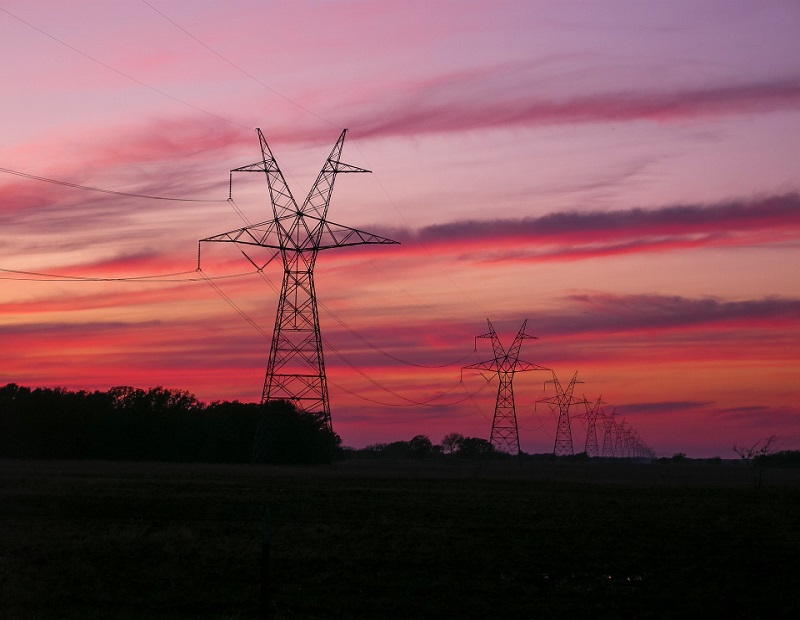How COVID-19 Is Disrupting the Power Sector
Power pricing, projects and operations are all being affected. Here's what to expect in the months to come.

Photo by Matthew T. Rader via Unsplash
Among many other ramifications, the massive closures forced by the COVID-19 pandemic have brought about a sharp drop in power demand—a trend that has significant implications for pricing, projects and operations.
“Like many industries, the renewable sector is being hit really hard by supply chain disruptions, shelter-in-place orders and other pandemic-related delays that threaten the jobs of hundreds of thousands of workers, as well as the time-sensitive tax incentives on which renewable projects depend,” said Bill Parsons, COO of the American Council on Renewable Energy.
An early April report from the Solar Energy Industries Association characterizes the impact of COVID-19 on the solar industry as “devastating.” The impacts are projected to be concentrated in the mid-year with the second quarter alone seeing a 54 percent reduction in demand compared to earlier forecasts and a 70 percent drop in the rooftop solar segment.
Diminishing Demand
Before the pandemic, the cost of solar was steadily declining; the energy source was becoming a cost-competitive mechanism for reducing utility costs, raising rents and increasing common-area reimbursements. A solar photovoltaic array had also emerged as a strategy to connect with tenants and their clients, as well as a way to expand an owner’s sustainable footprint.

Aidan Tuohy photo courtesy of Electric Power Research Institute
Now the advancement toward that future appears to be in doubt, at least in the short term. During the first few weekdays of shelter-in-place orders for Italy, Spain, New York, and California, peak energy demand across diverse power systems plummeted by 3 percent to 15 percent compared with the previous week in each region and the same week in 2019, according to an analysis by the Electric Power Research Institute.
With nearly 120,000 reported cases as of April 15, New York City has seen a greater reduction in demand than many markets, noted Aidan Tuohy, program manager for EPRI. On some days, electricity use has fallen as much as 10 percent, and reductions have ranged between 7 and 10 percent.
“Places like ISO New England, the PJM system operators and a large part of the mid-Atlantic—they seem lower but fewer impacts, maybe the 3 percent to 5 percent,” Tuohy said. California is seeing decreases between 3 percent and 7 percent. That compares with other hard-hit places like Italy, Spain and the U.K., which has seen larger changes with daily downshifts of 10 percent and 20 percent.
“We would think there’s going to be some reduction in most regions as these shutdowns happen, and I think that’s already started happening in a lot of places at this point,” Touhy said.
Historically, individual power companies have dealt with significant drops in demand due to hurricanes, floods and other natural disasters. However, the size and speed of the decline caused by the COVID-19 pandemic more closely resembles a drop that would ordinarily be seen over a longer period of time, such as during a recession.
Price Points

Bill Parsons, American Council on Renewable Energy
The fallback in electricity use has pushed prices to new lows. For some regions, like New England, the price drop is on top of already historic price and demand reductions resulting from multiple factors: milder weather, a dearth of major weather events, the rise of solar power and greater energy efficiency measures. New York City on-peak real-time prices have trended down over the past 30 days, currently averaging near $15 per megawatt-hour, down $10 in just a month, S&P Global Platts reports.
Observers across the board speculate that diminished need for commercial real estate space is likely to persist until a vaccine for COVID-19 is developed. That, in turn, will translate to continuing reduced energy demand.
In mid-March, ACORE surveyed utility-scale renewable developers and financial institutions to assess the initial impacts of the virus. The survey revealed that in addition to putting 450,000 renewable energy jobs at risk, the pandemic is also raising doubts about completion dates for renewable projects.
According to law firm Holland & Knight, financing such projects with coronavirus-related interruptions to a project’s construction or operations “can have significant implications for project borrowers, sponsors, project counterparties and financiers,” triggering loan information requirements. The pandemic could also lead to defaults on loans due to non-payment and insolvency, financial covenants, project delays, or government actions, among other causes.
“Our companies are in dire need of emergency relief for their placed-in-service and commence construction deadlines, as well temporary refundability to ensure they can monetize project credits over that time,” said Parsons. “In the end, we’re all in this together, and the renewable energy industry wants to be a key economic driver to help the nation through this downturn, as well as an effective climate solution over the long haul.”







You must be logged in to post a comment.